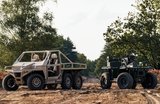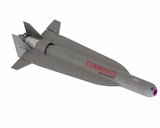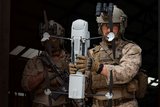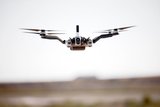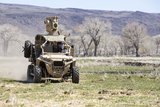Boeing A160T Unmanned Helicopter Flies With Foliage-Penetrating Radar in DARPA Tests
The Boeing A160T Hummingbird unmanned helicopter successfully completed 20 test flights from Aug. 31 to Oct. 8 with the Foliage Penetration Reconnaissance, Surveillance, Tracking and Engagement Radar (FORESTER).
The tests, conducted at Fort Stewart, Ga., validated the radar-carrying A160T's flight characteristics with more than 50 hours of flying time.
FORESTER is being developed by the Defense Advanced Research Projects Agency (DARPA) and the U.S. Army to provide enhanced coverage of moving vehicles and dismounted troops under foliage, filling the current surveillance gap. The Fort Stewart tests were conducted under a contract with DARPA.
"The success of these test flights points to the operational readiness of this important capability," said Vic Sweberg, director of Unmanned Airborne Systems (UAS) for Boeing. "The FORESTER is a unique radar, and the A160T is a unique helicopter. Together, they make a formidable system."
The 53 flight hours at Fort Stewart pushed the total flight hours for the A160T past the 220-hour mark. The helicopter's longest flight at Fort Stewart was 5.8 hours and its average flight time was 4.2 hours.
The A160T is a turbine-powered unmanned helicopter that can perform numerous missions, including intelligence, surveillance and reconnaissance, communications, and precision resupply. It holds the world record for endurance for its class (more than 18 hours unrefueled), can hover at 20,000 feet and can carry up to 2,500 pounds of cargo.
The Hummingbird recently was selected to participate in the U.S. Marine Corps Warfighting Laboratory's Immediate Cargo Unmanned Aerial System Demonstration Program. Boeing will demonstrate that the A160T can deliver at least 2,500 pounds of cargo from one simulated forward-operating base to another in fewer than six hours per day for three consecutive days.
The goal of Boeing's UAS division is to provide access to a breadth of unmanned capabilities in a way that best meets customers' needs. Boeing currently offers a wide variety of unmanned aircraft systems, including the A160 Hummingbird, ScanEagle, Unmanned Little Bird and SolarEagle.
More from Uncrewed Vehicles
-
![Cummings Aerospace showcases Hellhound loitering munition designed for US Army’s LASSO programme (video)]()
Cummings Aerospace showcases Hellhound loitering munition designed for US Army’s LASSO programme (video)
Cummings Aerospace presented its turbojet-powered Hellhound loitering munition at SOF Week 2025, offering a man-portable solution aligned with the US Army’s LASSO requirements.
-
![SOF Week 2025: PDW unveils attritable FPV drone for SOF operations at scale]()
SOF Week 2025: PDW unveils attritable FPV drone for SOF operations at scale
PDW has revealed its Attritable Multirotor First Person View drone at SOF Week 2025, offering special operations forces a low-cost, rapidly deployable platform for strike and ISR missions, inspired by battlefield lessons from Ukraine.
-
![SOF Week 2025: Teledyne FLIR white paper provides guidance on reusable loitering munitions]()
SOF Week 2025: Teledyne FLIR white paper provides guidance on reusable loitering munitions
Teledyne FLIR is highlighting the emerging requirements for 'recoverable and re-usable' loitering munitions across the contemporary operating environment during this week’s SOF Week conference in Tampa, Florida.
-
![SOF Week 2025: Kraken Technology group debuts K3 Scout USV in North America]()
SOF Week 2025: Kraken Technology group debuts K3 Scout USV in North America
High-performance maritime industry player Kraken Technology Group, based in the UK, has used the SOF Week conference in Tampa, Florida this week to debut its K3 Scout uncrewed surface vessel (USV) to the North American market.
-
![Palladyne AI and Red Cat to demonstrate capabilities for autonomous drone swarms to the US military]()
Palladyne AI and Red Cat to demonstrate capabilities for autonomous drone swarms to the US military
Red Cat and Palladyne AI recently conducted a cross-platform collaborative flight involving three diverse heterogeneous drones.
-
Jammer resistant drone designs spark search for countermeasures
The Russia-Ukraine conflict has driven another stage of evolution for drones and the counter measures to defend against them.








